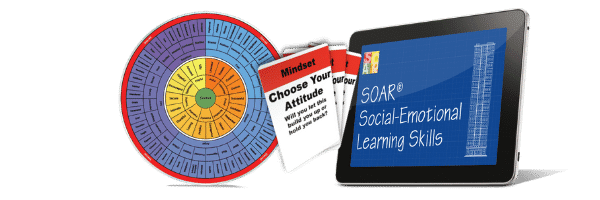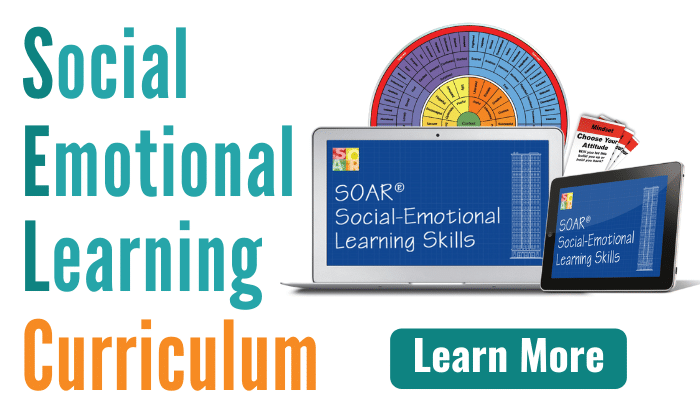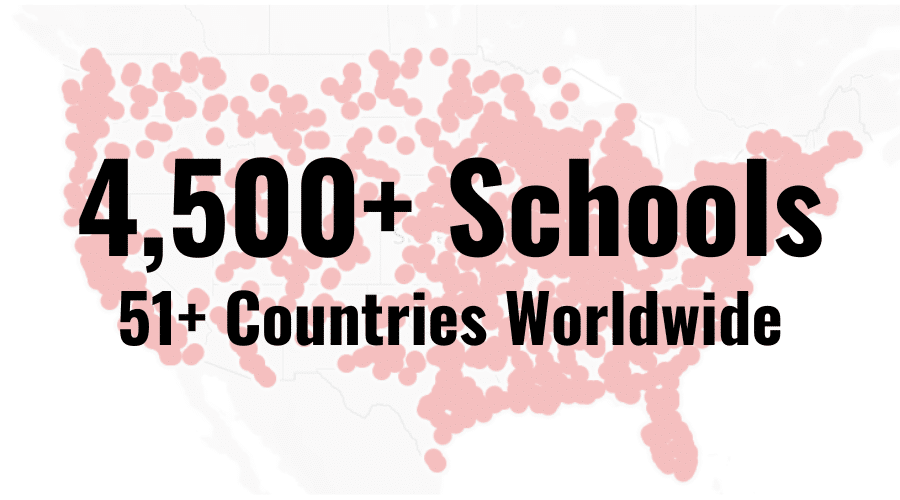Educators: Planning For Implementation
I vividly remember my thoughts and feelings as a classroom teacher. Every time I began implementing a new curriculum program, I always wondered, “What’s the best way to do this?”
Frankly, there never seemed to be simple answers. Now that I’m on the publication side of curriculum, I totally understand the dilemma; every state, district, school, and classroom has unique parameters within which to work. So, publishers provide a vast menu of instruction options to meet so many needs. The problem on your end is that the menu of options becomes overwhelming!
However, I’ve learned a simple strategy for peeling back the overwhelm. I first developed this strategy while consulting for another very large (actually, the largest in the world) educational publisher, helping users of their programs manage curriculum implementation for all subject areas. I continue to use it now, when consulting with principals and teachers about implementing my own programs, SOAR® Social-Emotional Learning Skills and SOAR Study Skills.
My point is, this strategy is flexible. It works wonderfully for study skills, which is obviously why I am outlining it here. But, hold this in your “back pocket” for use with future implementation initiatives, as well.
Would you prefer to talk to me? I love to work with teachers and administrators! Contact us to request a “getting started” call. (Don’t hesitate! My schedule fills quickly, especially as we get closer to “back to school” season. But, I would love to talk you through some of the best ways to get started.)
Five-Step Plan for Implementing Any Curriculum
Step 1
Use only what you need and what your students need! This is a critical point; your curriculum tools are a tool box, not a prescription! If you need to repair a leaky faucet, you’ll carry your toolbox to the sink –and then use the tools needed to fix the leak. Using all of the tools just for the sake of using them would be absurd.
The same is true for your curriculum materials. As I just explained, publishers have such a vast majority of needs to accommodate, we often give you more than you can use because we are meeting multiple demands. Don’t feel obligated to use everything.
Step 2
Identify what the authors feel is “Optimal Implementation.” Please understand, “optimal” is almost NEVER possible! EVERY school has to deal with logistical restrictions imposed by mandates, schedules, available personnel, etc. THAT’S OKAY. “Optimal” is your starting point. In many Teacher’s Editions, the optimal implementation plan is laid out in the form of a daily lesson plan. Other curriculum programs will have an Introduction or Teacher Handbook that provide templates for lesson planning or pacing of instruction. Almost always, those lesson plans are presented as if they are the one-and-only way to implement the program; this is very misleading! In fact, it’s often damaging to well-intentioned teachers who naturally draw the conclusion that they are doing something wrong. This belief prompts them to grow very frustrated with themselves.
The problem is that the implied expectations are impossible to meet. In creating the Optimal Plan, almost no publisher accounts for the inevitable logistical constraints facing every administrator and teacher on the planet.
So, I will say it again. “Optimal” is only your starting point!
Step 3
Identify your time parameters. How much time to do you have? A semester? A quarter? A 45-minute weekly seminar? Your schedule will be the #1 factor that underlies all of your decisions. I find it extremely helpful to draw a grid outlining the # of weeks (or days—whatever fits best on a 1 sheet of 8.5×11 paper) I have for covering the curriculum.
When I consult with schools, I ask:
- How many weeks do you have to dedicate to this instruction?
- How many days/week?
- How many minutes/day?
- How many students/class?
Whether I’m talking to them face-to-face or over the phone, I then draw a grid outlining the # of weeks, days, and minutes. This visual removes many conceptual “roadblocks” that face educators when they are in a state of overwhelm with a new curriculum.
Step 4
List your top objectives and priorities. What do your students need? What do you want to accomplish with the class? What are the expectations of your administration? After reviewing the materials and the Optimal Plan, what really resonated with you? What tools do you want to be sure and use?
CAUTION: Do not overthink this. Spend no more than thirty minutes brain-storming all of your thoughts, then another 15-30 minutes prioritizing your brainstorm list. Turn off the computer. Go to a local coffee shop. Get a comforting beverage. And, write. You will be amazed at how much clarity this focused brainstorm time will bring to you.
Your success with the curriculum and with your students entirely depends on your level of clarity regarding objectives and priorities. By taking the time to dice-up these issues on the front end, you’ll save hours of frustration later.
More than half of my consultation time is spent hashing out these objectives and priorities; I ask a lot of questions! Frankly, most educators have never had a free moment to think about these elements. Of course, they always have a vague notion of why they want a particular curriculum program, but I will ask probing questions to make sure they are crystal clear on their top objectives and priorities.
If you are doing this on your own, imagine I’m sitting across from you. What types of questions might I ask you to get a very clear picture of what you want your students to walk away with? Answers will come to you rapidly, seemingly out of nowhere. All you need is a small amount of reflection time. (But, again, I advise the comforting beverage from the local coffee shop. A different environment facilitates more effective reflection.)
Step 5
Finally, map the “Optimal” into the “Real.” Now that you have identified your top priorities, pull the pieces from the Optimal Plan into your lesson plan. We all have time constraints and other logistical limitations. But, now that you have identified your top objectives –and given yourself permission to use only what you need- it will be very easy to map components of the Optimal Plan into your Real Plan.
Without steps 1-4, this process would seem daunting and overwhelming. But, after taking time to create a visual representation of your scheduling parameters, reflecting on top objectives and making a list of top priorities, you will find this step to be a breeze!
The “Optimal” Implementation Plan for SOAR® Social-Emotional Learning Skills
The suggestions below are based on “ideal” resources of time, personnel, and budget. When implementing SOAR®, you will pull elements from this list to fit your schedule and accommodate your top objectives and priorities.
Two things to remember:
- Anything is better than nothing. These are life-changing strategies. Teaching one of them is far more effective than “zero” of them.
- “Optimal” is only a starting point. It is almost never possible to accomplish, given unique limitations of scheduling, personnel, and budget.
Optimal Implementation Plan for SOAR®:
- If possible, teach SOAR® in a dedicated, stand-alone class.
- Ideally, fall semester is the best time for this class. Many schools incorporate SOAR® into a first-year seminar class for middle-schoolers or a freshman academy for high school students. What better way to prepare students for success in their new school?
- Train your entire staff in a few, basic strategies so they can support the use of SOAR® across the curriculum. You know your students and staff best. Pick three concepts/strategies you think will be the most influential for your school and teach them across a few staff meetings.
Getting Started With Students
- On Day 1, have students take the Scorecard Pre-Test. This will allow you to see where your students stand with what they are about to learn so you know how to best proceed.
- Schedule time for weekly 1-1 interviews. Spend 2-7 minutes with each student, focusing on “What is going well?” After a month, you can begin to address what is not going well. But even then, always start and end these conversations with positive questions and feedback. (If time is tight, aim for a three-minute check-in 2-3x/week with the 20% of your class that needs the most support. For the remaining 80%, schedule 1-1 meetings every other week or every month. (Trust me, there will always be an 80/20 curve in your class!)
- Allow time for class discussions. You are naturally prompted to host class discussions with the optional activities in the MMTG. Class discussions help influence positive peer pressure. You want to highlight successes and breakthroughs of as many students as possible, allowing them to share their own stories. As peers hear success stories from other peers, they slowly allow their wall of resistance to fall. Rules: always keep feedback focused on specific accomplishments or behaviors and validate their experiences and feelings, even if someone says a strategy is awful. Typically, if you dig deeper in these situations, you’ll identify the real barrier to success and can determine a simple detour.
Educators: Implementation Tools
More information is available on the following pages:
- Planning for Implementation
- Schedule Options
- Scope & Sequence
- CASEL Alignment
- Curriculum Materials Needed
- How to Get Students Engaged
If you have additional questions, please contact us.
"How Do I Feel?"
Curriculum Kit
Get It FREE!
Includes the SOAR Feelings Wheel, Coping Cards, Full Lesson,
& Information on...

Delivering Student Skills in
Self-Awareness, Self-Management,
Social Awareness, & Responsibility
SOAR® in the News
The SOAR® Curriculum
Who’s Using SOAR®?
Guarantee on All SOAR® Products




